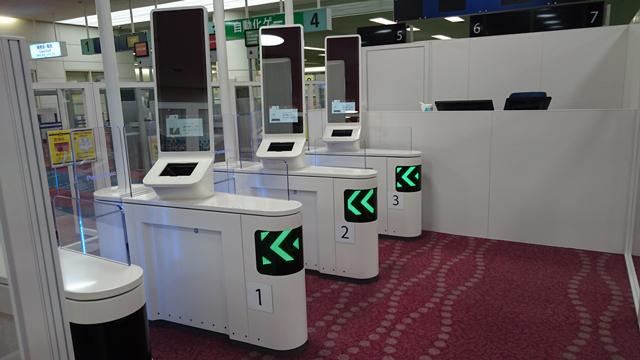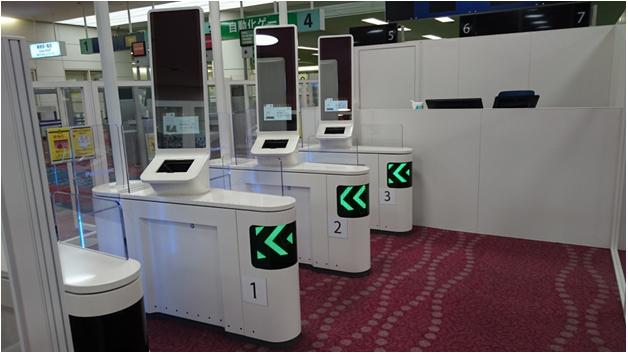
Dec 25, 2025
- Products & Solutions
- Stories
- Technology
- AI & Robotics
- R&D
- Business Solutions
Dec 15, 2017
Products & Solutions / Press Releases
The facial recognition system is helping to streamline immigration procedures for Japanese travelers returning home at Tokyo International Airport

Osaka, Japan - Panasonic Corporation announced today that its facial recognition gate has been chosen by the Immigration Bureau of the Ministry of Justice to streamline immigration procedures at a major Japanese airport in an easy and secure fashion.
As part of the measures to be implemented for the increasing number of foreign visitors, the Justice Ministry has been considering using facial recognition technology to streamline the departure and return processes for Japanese travelers. Since October 18, 2017, three units of Panasonic's facial recognition gate have been put into operation at Tokyo International Airport's immigration control. The system is contributing to the smooth immigration examination of Japanese travelers returning home. Without the need for prior registration of biometric data, the system compares photographic data of the traveler's face in the IC chip embedded in the person's passport with a photo taken at the facial recognition gate to verify the identity.
Panasonic's facial recognition gate was newly designed to streamline the departure and arrival processes of Japanese nationals, based on the concept of a simple, secure, and safe solution where both first-timers and the elderly can pass through the gate without delay, frustration, or confusion. This system will be available only in Japan for the time being.
The gate has the following features: (1) Intuitive usability for first-timers and the elderly thanks to the ergonomic design and sophisticated technology the company has developed for passport readers; (2) High performance of the facial recognition engine with advanced technology that can deal with appearance-altering variations such as aging, makeup, facial expression, and image quality; and (3) Spatial design and overall service design that enable the optimum arrangement in a limited space based on field trials.
Panasonic will continue to help authorities implement smooth and strict immigration control procedures at airports and seaports throughout Japan as the country aims to establish itself as a tourism nation toward 2020 and beyond. The company also aims to provide various solutions for consumers by combining its passport and facial recognition technologies.
The concept of the gate is a simple, secure, and safe facial recognition gate solution where both first-timers and the elderly can go through without delay, frustration, or confusion in order to streamline the departure and arrival procedures for Japanese citizens.
Based on this concept, Panasonic has employed various advanced technologies that meet a number of requirements considered necessary to operate the gate properly. They include the advance elimination of factors that can cause false rejections, countermeasures against unauthorized entry and high-performance facial recognition engine. To improve usability, it has also achieved the following features through research and field trials in collaboration with external research institutes such as universities.

Panasonic Corporation is a worldwide leader in the development of diverse electronics technologies and solutions for customers in the consumer electronics, housing, automotive, and B2B businesses. Celebrating its 100th anniversary in 2018, the company has expanded globally and now operates 495 subsidiaries and 91 associated companies worldwide, recording consolidated net sales of 7.343 trillion yen for the year ended March 31, 2017. Committed to pursuing new value through innovation across divisional lines, the company uses its technologies to create a better life and a better world for its customers. To learn more about Panasonic:
http://www.panasonic.com/global
Panasonic Corporation
Tel: +81-(0)3-3574-5664
The content in this website is accurate at the time of publication but may be subject to change without notice.
Please note therefore that these documents may not always contain the most up-to-date information.
Please note that German, Spanish and Chinese versions are machine translations, so the quality and accuracy may vary.